Mar 2, 2019 | coins, commemorative, investment, legislative
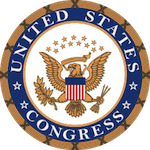 While the mainstream media has mostly been distracted by other activities in Congress, those of us who watch numismatic-related legislation have had our own action.
While the mainstream media has mostly been distracted by other activities in Congress, those of us who watch numismatic-related legislation have had our own action.
First, the House of Representatives passed Route 66 Centennial Commission Act (H.R. 66) to create a commission to celebrate the centennial of the famous Route 66 in 2026. Although this is not a numismatic-related bill per se, if passed, the bill says that the centennial commission will recommend commemorative coins for this event. The bill has been referred to the Senate Environment and Public Works Committee waiting further action.
The other legislation of note is the Monetary Metals Tax Neutrality Act of 2019 (H.R. 1089) that removes all tax considerations for the sale of “gold, silver, platinum, or palladium coins minted and issued by the Secretary at any time.” It also exempts “refined gold or silver bullion, coins, bars, rounds, or ingots which are valued primarily based on their metal content and not their form.” This means that no capital gains on the sale of these items will be taxed and no losses can be written off by the taxpayer.
An interesting side effect of this bill would be that the gains realized when rare coins auctioned for millions of dollars will not be taxed. This means if an 1804 Silver Dollar sells for more than the $3.8 million it sold for in 2013, the seller will not pay capital gains tax on the sale. However, if it sells for less, the seller will not be able to write-off the loss.
For those keeping score at home, this law will not help the sale of a 1913 Liberty Head Nickel since its composition is copper and nickel.
Of course, this will only be an issue if H.R. 1089 passes and the president signs it into law.
H.R. 66: Route 66 Centennial Commission Act
Summary: This bill establishes the Route 66 Centennial Commission to honor Route 66 on the occasion of its centennial anniversary.The Department of Transportation shall prepare a plan on the preservation needs of Route 66.
Received in the Senate and Read twice and referred to the Committee on Environment and Public Works. — Feb 7, 2019
Motion to reconsider laid on the table Agreed to without objection. — Feb 6, 2019
On motion to suspend the rules and pass the bill Agreed to by the Yeas and Nays: (2/3 required): 399 – 22 (Roll no. 67). — Feb 6, 2019
Considered as unfinished business. — Feb 6, 2019
At the conclusion of debate, the Yeas and Nays were demanded and ordered. Pursuant to the provisions of clause 8, rule XX, the Chair announced that further proceedings on the motion would be postponed. — Feb 6, 2019
DEBATE – The House proceeded with forty minutes of debate on H.R. 66. — Feb 6, 2019
Considered under suspension of the rules. — Feb 6, 2019
Ms. Norton moved to suspend the rules and pass the bill. — Feb 6, 2019
Referred to the House Committee on Transportation and Infrastructure. — Jan 3, 2019
H.R. 1089: Monetary Metals Tax Neutrality Act of 2019
Summary: Monetary Metals Tax Neutrality Act of 2019This bill exempts gains or losses from the sale or exchange of certain coins or bullion from recognition for income tax purposes. The exemption applies to gains or losses from the sale or exchange of (1) gold, silver, platinum, or palladium coins minted and issued by the Department of the Treasury; or (2) refined gold or silver bullion, coins, bars, rounds, or ingots which are valued primarily based on their metal content and not their form.
Referred to the House Committee on Ways and Means. — Feb 7, 2019
S. 457: President George H.W. Bush and Barbara Bush Coin Act
Read twice and referred to the Committee on Banking, Housing, and Urban Affairs. — Feb 12, 2019
H.R. 1173: President George H.W. Bush and Barbara Bush Dollar Coin Act
Referred to the House Committee on Financial Services. — Feb 13, 2019
H.R. 1257: To require the Secretary of the Treasury to mint coins in commemoration of the United States Coast Guard.
Referred to the House Committee on Financial Services. — Feb 14, 2019
S. 509: A bill to require the Secretary of the Treasury to mint coins in commemoration of the United States Coast Guard.
Read twice and referred to the Committee on Banking, Housing, and Urban Affairs. — Feb 14, 2019
Feb 1, 2019 | coins, commemorative, legislative
 At noon on January 3, 2018, the 116th Congress gaveled into session. The first day of a new congressional session is mostly ceremonial and procedural. Leaders are chosen. Rules are established. Committees are formed. And the House of Representatives gets to work on a new budget.
At noon on January 3, 2018, the 116th Congress gaveled into session. The first day of a new congressional session is mostly ceremonial and procedural. Leaders are chosen. Rules are established. Committees are formed. And the House of Representatives gets to work on a new budget.
Usually, the budget the House starts with is for the next fiscal year. This year, the 115th Congress did not finish their work and left the government unfunded. It does not matter whose side you are on or what animal you worship, the bottom line is that 800,000 federal employees, many more contractors, and the businesses that rely on their patronage were hurt. Sure, the federal employees will earn back pay but the contractors who were furloughed will not. The businesses that serve these people will also not be made whole.
But that did not stop members of Congress from submitting bills for consideration. As I write this, there have been 842 bills submitted in the House of Representatives and 268 in the Senate. Of those bills, only four have numismatic significance. All four bills were also submitted in the 115th Congress but had died in committee when that Congress adjourned for the final time.
As of now, the Financial Services Committee, chaired by Rep. Maxine Waters (D-CA), has not posted the rules as to what it will take for numismatic-relation legislation to move forward. Since the 112th Congress, the committee required a numismatic bill to have 250 co-sponsors. But since the control of the committee has changed parties, we will have to wait until the committee publishes their rules.
Here are the first four numismatic-related bills submitted in the 116th Congress:
H.R. 61: Carson City Mint 150th Anniversary Commemorative Coin Act of 2019
Summary: This bill directs the Department of the Treasury to mint and issue $5 gold coins and $1 silver coins in commemoration of the 150th anniversary of the Carson City Mint in Carson City, Nevada.All surcharges from sales of such coins shall be paid to the Nevada State Museum Dedicated Trust Fund.
Referred to the House Committee on Financial Services. — Jan 3, 2019
H.R. 500: Christa McAuliffe Commemorative Coin Act of 2019
Referred to the House Committee on Financial Services. — Jan 11, 2019
H.R. 636: To require the Secretary of the Treasury to mint coins in commemoration of Muhammad Ali.
Referred to the House Committee on Financial Services. — Jan 17, 2019
S. 239: A bill to require the Secretary of the Treasury to mint coins in recognition of Christa McAuliffe.
Read twice and referred to the Committee on Banking, Housing, and Urban Affairs. — Jan 28, 2019
Jan 3, 2019 | coins, commemorative, legislative
 It should come as no surprise to anyone that the 115th Congress left unfinished business. As we start the new year, 25-percent of the executive branch does not have the legal funding to operate. Those with leftover funds operated as long as they could but are now closed pending congressional action.
It should come as no surprise to anyone that the 115th Congress left unfinished business. As we start the new year, 25-percent of the executive branch does not have the legal funding to operate. Those with leftover funds operated as long as they could but are now closed pending congressional action.
As with previous shutdowns, the U.S. Mint and the Bureau of Engraving and Printing are not affected. Both agencies are self-funded from their profits (seigniorage) which is held in their respective Public Enterprise Funds.
The 115th Congress is constitutionally scheduled to end at 12:00 noon on January 3, 2019, when the 116th Congress will begin. Congress will take up the new funding bills as part of the opening session.
When the new Congress gavels into session, any bill pending from the 115th Congress will be removed from the docket. It will be said that these bills will die in committee.
In reviewing December’s legslation update, there was the passage of one bill:
H.R. 1235: Naismith Memorial Basketball Hall of Fame Commemorative Coin Act
Summary: (Sec. 3) This bill directs the Department of the Treasury to mint and issue not more than 50,000 $5 coins, 400,000 $1 coins, and 750,000 half-dollar coins in recognition and celebration of the Naismith Memorial Basketball Hall of Fame.The coins shall be in the shape of a dome, and the design on the common reverse of the coins shall depict a basketball. Treasury shall hold a competition to determine the design of the common obverse of the coins, which shall be emblematic of the game of basketball.(Sec. 7) The bill requires all sales of such coins to include specified surcharges, which shall be paid by Treasury to the Hall to fund an endowment for increased operations and educational programming.
Message on Senate action sent to the House. — Dec 19, 2018
Presented to President. — Dec 19, 2018
Passed Senate without amendment by Voice Vote. — Dec 18, 2018
Senate Committee on Banking, Housing, and Urban Affairs discharged by Unanimous Consent. — Dec 18, 2018
Received in the Senate and Read twice and referred to the Committee on Banking, Housing, and Urban Affairs. — Sep 26, 2017
Motion to reconsider laid on the table Agreed to without objection. — Sep 25, 2017
On motion to suspend the rules and pass the bill, as amended Agreed to by voice vote. — Sep 25, 2017
DEBATE – The House proceeded with forty minutes of debate on H.R. 1235. — Sep 25, 2017
Considered under suspension of the rules. — Sep 25, 2017
Mr. Barr moved to suspend the rules and pass the bill, as amended. — Sep 25, 2017
Referred to the House Committee on Financial Services. — Feb 27, 2017
The Naismith Memorial Basketball Hall of Fame Commemorative Coin Act was sent to the White House for presidential signature on December 19, 2018. The president has ten days to act on the bill. He can sign the bill, which there is no indication that he has, and it becomes law. He could veto the bill to prevent it from becoming law.
But what if he does not sign the bill? If Congress was still in session then the bill automatically becomes law. If Congress adjourned then the bill does not become law. That is called a pocket veto.
Because of the shutdown, Congress did not adjourn while trying to resolve the issue. There were pro forma sessions, meaning that a representative gaveled in the House and Senate only to adjourn for the day. If the president did not sign or veto the bill, it has become public law. However, since the Government Printing Office (GPO), the official publisher of the U.S. government, is closed because of the shutdown, they cannot publish the results of legislation passed or vetoed. Therefore, we do not know whether this bill is now the law.
Previous administrations would announce bill signings in their regular news streams. This White House has chosen to discontinue that practice leaving us at the mercy of the currently closed GPO.
In December, the Senate passed the National Law Enforcement Museum Commemorative Coin Act by a voice vote. Although the bill was sent to the House for consideration it never left the committee and will die in committee when the 116th Congress is gaveled into session.
S. 2863: National Law Enforcement Museum Commemorative Coin Act
Held at the desk. — Dec 19, 2018
Received in the House. — Dec 19, 2018
Message on Senate action sent to the House. — Dec 17, 2018
Passed Senate without amendment by Voice Vote. — Dec 13, 2018
Senate Committee on Banking, Housing, and Urban Affairs discharged by Unanimous Consent. — Dec 13, 2018
Read twice and referred to the Committee on Banking, Housing, and Urban Affairs. — May 16, 2018
Finally, Rep. Bruce Poliquin (R-ME), whose district includes Kennebunkport, introduced the President George H. W. Bush and Barbara Bush Dollar Coin Act. Essentially, this would have extended the Presidential $1 Coin program to include President George H.W. Bush and First Lady Barbara Bush. This bill, like many others, died in committee.
H.R. 7257: President George H. W. Bush and Barbara Bush Dollar Coin Act
Referred to the House Committee on Financial Services. — Dec 11, 2018
A full review of the 115th Congress will be published shortly after the government reopens and the GPO resumes its publishing operations.
Nov 6, 2018 | commentary, legislative
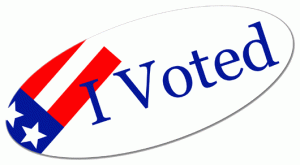 The monthly numismatic legislation review was purposely delayed to bring you this important message:
The monthly numismatic legislation review was purposely delayed to bring you this important message:
GO OUT AND VOTE!
Every two years, all 435 seats in the House of Representatives and one-third of the Senate seats are open to election. These people are supposed to represent you in Congress. They are supposed to represent your interests. How do you want to be represented?
After the fall of Saddam Hussein, the people of Iraq had an election where multiple people were on the ballot. In the United States, we celebrated for them by showing pictures of people with purple ink-stained, fingers, the sign that they voted.
Voting is more important for your local elections. State, district, county, and municipal elections are the ones that have more impact on your lives. They impact the schools, your local roads, small businesses including your local coin dealer, trash pickup, maintenance of your local parks, and nearly everything surrounding your daily lives.
Don’t forget about the ballot initiatives. This is your chance to have a significant say in the policies that your government will have to abide by. Here in Maryland, there is a ballot initiative to create a “lock box” (where have we heard that one before?) for the state profits on gambling revenue so that it would go directly to fund education. This initiative was proposed based on lessons learned where a significant portion of the settlement from the tobacco companies that was supposed to go to healthcare initiatives was transferred to the general treasury to pay for everything else.
Does your state have ballot initiatives? Do you know what they say? How are you going to vote on them when you get to the polls?
Do you know who the candidates are? Do you agree with their position or will you be voting for them because they claim they party as you do? Do you know which incumbent actually did their job and thought about you or did they change because a deep pocket donor asked them to?
It is a cliche to claim that this is the most important election ever. It is always the most important election ever because it is the one happening right now. It is important because you must have your say in how you want your government to work for you. It is your government.
GO OUT AND VOTE!
Legislatively, Congress was in recess for October while members who are seeking re-election when home to campaign. The only changes to numismatic-related legislation were the number of co-sponsors on bills currently in committee.
If history is a lesson, we will see progress on some of these bills during the lame-duck session.
Oct 2, 2018 | coins, commemorative, legislative
 This is a surprise. This past month Rep. Alex Mooney (R-WV) introduced a bill that would make the gains made on the sale of bullion coins issued by the U.S. Mint tax exempt. This would be for any precious metal coin. The bill says “No gain or loss shall be recognized on the sale or exchange of gold, silver, platinum, or palladium coins minted and issued by the Secretary at any time…”
This is a surprise. This past month Rep. Alex Mooney (R-WV) introduced a bill that would make the gains made on the sale of bullion coins issued by the U.S. Mint tax exempt. This would be for any precious metal coin. The bill says “No gain or loss shall be recognized on the sale or exchange of gold, silver, platinum, or palladium coins minted and issued by the Secretary at any time…”
The bill also includes “refined gold or silver bullion, coins, bars, rounds, or ingots which are valued primarily based on their metal content and not their form.”
It is called the Monetary Metals Tax Neutrality Act of 2018 (H.R. 6790) and was introduced on September 12, 2018.
While this may be good for the numismatic community, with the mid-term elections just over a month away and congress mired in many fights, it is difficult to see that this bill passes. Even if it passes in a lame duck session, the possibility of the Senate acting on it is very low. Of course that depends on the outcome of the election and I have been wrong about prognosticating some bills!
H.R. 6790: Monetary Metals Tax Neutrality Act of 2018
Summary: This bill amends the Internal Revenue Code to exempt gains or losses from the sale or exchange of certain coins or bullion from recognition for income tax purposes. The exemption applies to gains or losses from the sale or exchange of: (1) gold, silver, platinum, or palladium coins minted and issued by the Department of the Treasury; or (2) refined gold or silver bullion, coins, bars, rounds, or ingots which are valued primarily based on their metal content and not their form.
Referred to the House Committee on Ways and Means. — Sep 12, 2018
Aug 4, 2018 | Carson City, coin design, coins, commemorative, commentary, legislative
NOTE: The title is NOT a typographical error. It is a commentary raised by the discussion, below.
With the flurry of legislative action last month, the only bill that I commented on was the American Innovation $1 Coin Act (Public Law No: 115-197) because it was the only one that is the law. The others were just introduced and may not be passed out of committee.
But that has not prevented speculation and discussion about the potential for these potential commemorative coins. Based on the email buzz, the two bills of interest are the Integration of Baseball Commemorative Coin Act (S. 3283 and H.R. 6469) and the Carson City Mint 150th Anniversary Commemorative Coin Act (H.R. 6221).
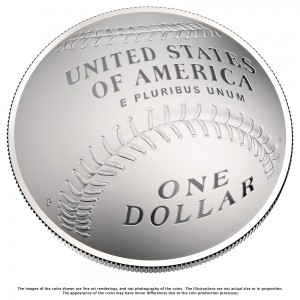
Reverse design of the 2014 Baseball Hall of Fame commemorative (Image courtesy of the U.S. Mint)
For those commentators who cannot read simple English, it says that the design “shall depict a baseball diamond.” Nowhere in that sentence does it say that the coins have to be shaped like the baseball diamond. A depiction and the shape of a coin are two different concepts.
Trying to understand where the idea that the coins would be square, a review of the official statement issued by Sens. Tim Scott (R-SC), Cory Booker (D-NJ), and Rep. Roger Williams (R-TX) as co-sponsors does not mention the shape of the coin.
What might have confused the issue was a report in The Hill that former Montreal Expos and Chicago Cubs legend Andre “The Hawk” Dawson talked about the coin minted in the shape of home plate. While Dawson was a great ballplayer and earned his place in the Baseball Hall of Fame, he is not a member of Congress and, apparently, did not read the bill.
The commentary about the shape does not take into consideration what the bill actually says. Aside from talking about it like it will be the law, it does not take into consideration that the bill is now in committee with less than 90-days to go until the mid-term elections. Without turning this into a political analysis blog post, there will be contention regardless of the outcome of the election. With the late introduction of this bill and the current political environment, the likelihood of this bill passing both chambers before the end of the session is highly unlikely.

Carson City Mint (1866)
Even though the first press used in Carson City is located in the museum, it may not meet the specifications that are required of the U.S. Mint to strike modern commemorative coins. And both the press and building are not owned by the United State government, a fact that would make those who provide oversight of the U.S. Mint’s operations a bit nervous.
While these “what if” questions might make good parlour or message board discussions, allegedly responsible industry journalists and pundits should know better.
Aug 1, 2018 | coins, commemorative, legislative
July has been a big month for numismatic-related legislation for the 115th Congress. Aside from passing the American Innovation $1 Coin Act (Public Law 115-197), the Saint-Gaudens National Historical Park Redesignation Act (H.R. 965) and a technical change to the American Legion 100th Anniversary Commemorative Coin Act (Section 3. in S. 1182) moves closer to passage.
The Saint-Gaudens National Historical Park Redesignation Act does not add a commemorative coin program but it changes the designation for the Saint-Gaudens National Historic Site in New Hampshire to be the “Saint-Gaudens National Historical Park.” The change is significant in that it changes the funding for the staffing and maintenance of the site. It also will keep the site accessible for tourism.
Augustus Saint-Gaudens is known as the artist who co-conspired with President Theodore Roosevelt in his “pet crime” to redesign United States coinage. Before his death in 1907, Saint-Gaudens provided the design for the $20 Double Eagle and $10 Eagle gold coinage.
Saint-Gaudens’ legacy continued after his death by his students Adolph A. Weinman, designer of the Walking Liberty half-dollar and Mercury dime, and James Earle Fraser, designer of the Buffalo Nickel.
As for the American Legion 100th Anniversary Commemorative Coin Act, the commemorative program was passed in September 2017 and signed by the president in October 2018 (Public Law No: 115-65). This bill has a few minor technical changes that will not change the program as originally passed.
For once, it was a busy month for numismatic-related legislation watchers. maybe congress is trying to show their constituents that they have a record of doing something.
H.R. 770: American Innovation $1 Coin Act
Summary: (Sec. 2) This bill directs the Department of the Treasury, over a 14-year period beginning in 2019, to mint and issue “American Innovation” $1 coins commemorating innovation and innovators from each state, each U.S. territory, and the District of Columbia. Treasury shall issue four coins per year, in alphabetical order by jurisdiction, until a coin has been issued for each jurisdiction. Treasury may mint and issue a $1 coin in 2018 to introduce the series. Neither the bust of any person nor the portrait of any living person may be included in the design of the coins.The bill instructs Interior to continue to mint and issue $1 coins honoring Native Americans and their contributions.
Became Public Law No: 115-197. — Jul 20, 2018
Signed by President. — Jul 20, 2018
Presented to President. — Jul 10, 2018
Motion to reconsider laid on the table Agreed to without objection. — Jun 27, 2018
On motion that the House agree to the Senate amendment Agreed to without objection. (text as House agreed to Senate amendment: CR H5786-5787) — Jun 27, 2018
Mr. Hensarling asked unanimous consent to take from the Speaker’s table and agree to the Senate amendment. — Jun 27, 2018
Message on Senate action sent to the House. — Jun 21, 2018
Passed Senate with an amendment by Voice Vote. — Jun 20, 2018
Measure laid before Senate by unanimous consent. — Jun 20, 2018
Senate Committee on Banking, Housing, and Urban Affairs discharged by Unanimous Consent. — Jun 20, 2018
Received in the Senate and Read twice and referred to the Committee on Banking, Housing, and Urban Affairs. — Jan 17, 2018
Motion to reconsider laid on the table Agreed to without objection. — Jan 16, 2018
On motion to suspend the rules and pass the bill, as amended Agreed to by voice vote. — Jan 16, 2018
DEBATE – The House proceeded with forty minutes of debate on H.R. 770. — Jan 16, 2018
Considered under suspension of the rules. — Jan 16, 2018
Mr. Duffy moved to suspend the rules and pass the bill, as amended. — Jan 16, 2018
Referred to the House Committee on Financial Services. — Jan 31, 2017
H.R. 965: Saint-Gaudens National Historical Park Redesignation Act
Summary: (Sec. 2) This bill redesignates the Saint-Gaudens National Historic Site, in New Hampshire, as the "Saint-Gaudens National Historical Park."
Placed on Senate Legislative Calendar under General Orders. Calendar No. 512. — Jul 12, 2018
Committee on Energy and Natural Resources. Reported by Senator Murkowski without amendment. With written report No. 115-299. — Jul 12, 2018
Committee on Energy and Natural Resources. Ordered to be reported without amendment favorably. — May 17, 2018
Received in the Senate and Read twice and referred to the Committee on Energy and Natural Resources. — Oct 3, 2017
Motion to reconsider laid on the table Agreed to without objection. — Oct 2, 2017
On motion to suspend the rules and pass the bill, as amended Agreed to by the Yeas and Nays: (2/3 required): 401 – 0 (Roll no. 545). — Oct 2, 2017
Considered as unfinished business. — Oct 2, 2017
At the conclusion of debate, the Yeas and Nays were demanded and ordered. Pursuant to the provisions of clause 8, rule XX, the Chair announced that further proceedings on the motion would be postponed. — Oct 2, 2017
DEBATE – The House proceeded with forty minutes of debate on H.R. 965. — Oct 2, 2017
Considered under suspension of the rules. — Oct 2, 2017
Mr. Thompson (PA) moved to suspend the rules and pass the bill, as amended. — Oct 2, 2017
Placed on the Union Calendar, Calendar No. 197. — Aug 25, 2017
Reported (Amended) by the Committee on Natural Resources. H. Rept. 115-277. — Aug 25, 2017
Referred to the House Committee on Natural Resources. — Feb 7, 2017
S. 3239: Integration of Baseball Commemorative Coin Act
Read twice and referred to the Committee on Banking, Housing, and Urban Affairs. — Jul 18, 2018
H.R. 6469: To require the Secretary of the Treasury to mint commemorative coins in recognition of the 75th anniversary of the integration of baseball.
Referred to the House Committee on Financial Services. — Jul 23, 2018
S. 1182: National Flood Insurance Program Extension Act of 2018
Summary: (Sec. 2) This bill amends the National Flood Insurance Act of 1968 to reauthorize the National Flood Insurance Program through November 30, 2018.
Motion by Senator McConnell to refer to Senate Committee on Banking, Housing, and Urban Affairs the House message to accompany S. 1182 with instructions to report back forthwith with the following amendment (SA 3630) made in Senate. — Jul 26, 2018
Motion by Senator McConnell to concur in the House amendment to the text of S. 1182 with an amendment (SA 3628) made in Senate. — Jul 26, 2018
Cloture motion on the motion to concur in the House amendments to S. 1182 presented in Senate. — Jul 26, 2018
Motion by Senator McConnell to concur in the House amendments to S. 1182 made in Senate. — Jul 26, 2018
Measure laid before Senate by unanimous consent. — Jul 26, 2018
The title of the measure was amended. Agreed to without objection. — Jul 25, 2018
Motion to reconsider laid on the table Agreed to without objection. — Jul 25, 2018
On motion to suspend the rules and pass the bill, as amended Agreed to by the Yeas and Nays: (2/3 required): 366 – 52 (Roll no. 373). — Jul 25, 2018
Considered as unfinished business. — Jul 25, 2018
Message on House action received in Senate and at desk: House amendments to Senate bill. — Jul 25, 2018
At the conclusion of debate, the Yeas and Nays were demanded and ordered. Pursuant to the provisions of clause 8, rule XX, the Chair announced that further proceedings on the motion would be postponed. — Jul 24, 2018
DEBATE – The House proceeded with forty minutes of debate on S. 1182. — Jul 24, 2018
Considered under suspension of the rules. — Jul 24, 2018
Mr. Hensarling moved to suspend the rules and pass the bill, as amended. — Jul 24, 2018
Held at the desk. — Aug 4, 2017
Received in the House. — Aug 4, 2017
Message on Senate action sent to the House. — Aug 4, 2017
Passed Senate with an amendment by Voice Vote. — Aug 3, 2017
Measure laid before Senate by unanimous consent. — Aug 3, 2017
Senate Committee on Banking, Housing, and Urban Affairs discharged by Unanimous Consent. — Aug 3, 2017
Read twice and referred to the Committee on Banking, Housing, and Urban Affairs. — May 18, 2017
H.R. 6635: To require the Secretary of the Treasury to mint coins in commemoration of the centennial of the establishment of the Tomb of the Unknown Soldier.
Referred to the House Committee on Financial Services. — Jul 26, 2018
Jul 24, 2018 | coins, dollar, legislative
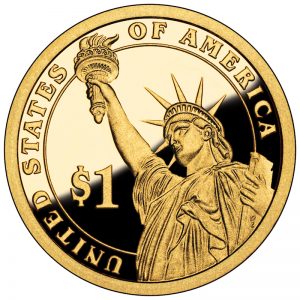 On July 20, 2018, the president signed the American Innovation $1 Coin Act to become Public Law No. 115-197.
On July 20, 2018, the president signed the American Innovation $1 Coin Act to become Public Law No. 115-197.
Beginning in 2019, there will be four dollar coins issued where the obverse will be “a likeness of the Statue of Liberty extending to the rim of the coin and large enough to provide a dramatic representation of Liberty.” The reverse will be emblematic of an innovation, innovator, or a group of innovators significant to that state or territory. The dollar coins will use the same Manganese-Brass composition as all dollar coins struck since 2000 with the edge lettering consisting of the year, mintmark, and the national motto E PLURIBUS UNUM.
The American Innovation $1 Coin will be issued in the same order as the 50 State Quarter Program, the order the states entered the union, followed by the District of Columbia and U.S. Territories.
The order will be as follows:
2019
- Delaware
- Pennsylvania
- New Jersey
- Georgia
2020
- Connecticut
- Massachusetts
- Maryland
- South Carolina
2021
- New Hampshire
- Virginia
- New York
- North Carolina
2022
- Rhode Island
- Vermont
- Kentucky
- Tennessee
2023
- Ohio
- Louisiana
- Indiana
- Mississippi
2024
- Illinois
- Alabama
- Maine
- Missouri
2025
- Arkansas
- Michigan
- Florida
- Texas
2026
- Iowa
- Wisconsin
- California
- Minnesota
2027
- Oregon
- Kansas
- West Virginia
- Nevada
2028
- Nebraska
- Colorado
- North Dakota
- South Dakota
2029
- Montana
- Washington
- Idaho
- Wyoming
2030
- Utah
- Oklahoma
- New Mexico
- Arizona
2031
- Alaska
- Hawaii
- District of Columbia
- The Commonwealth of Puerto Rico
2032
- Guam
- American Samoa
- The U.S. Virgin Islands
- The Northern Mariana Islands
Happy collecting!
Jul 22, 2018 | coins, commemorative, legislative, news
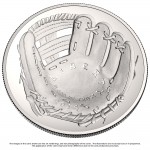
Winning design for the obverse of the 2014 Baseball Hall of Fame commemorative. (Image courtesy of the U.S. Mint)
On April 15, 1947, Jackie Robinson debuted for the National League’s Brooklyn Dodgers and on July 5, 1947, Larry Doby integrated the American League with the Cleveland Indians.
This past week, Senators Time Scott (R-SC) and Cory Booker (D-NJ) introduced the bill (S. 3239) in the Senate on behalf of the National Baseball Hall of Fame. Next week, Representatives Roger Williams (R-TX) and Cedric Richmond (D-LA) will likely introduce a similar bill in the House of Representatives.
S. 3239: A bill to require the Secretary of the Treasury to mint commemorative coins in recognition of the 75th anniversary of the integration of baseball.
Read twice and referred to the Committee on Banking, Housing, and Urban Affairs. — Jul 18, 2018
To keep with the theme of making something different, such as the 2014 coins being curved, the bill calls of the new commemorative to be square and the common reverse to resemble a baseball diamond. This should be somewhat easy to accomplish since a real baseball diamond is nothing more than a square tilting on its corner.
For the obverse of the coin, the U.S. Mint is supposed to hold an open competition for artists to provide their suggestion for a design “emblematic of the integration of the game of baseball”
There will be the usual three-coin program consisting of no more than 50,000 $5 gold coins, 500,000 silver dollars, and 750,000 clad half-dollars. Surcharges received from the sale of the coins will benefit the National Baseball Hall of Fame and Museum and the Jackie Robinson Foundation.
And now the news…

July 15, 2018
The oldest coins in the find were minted during the reign of Hadrian (117-138 AD); the youngest come from the last years of the reign of Septimius Severus (beginning of the 3rd century AD). "All coins were found very close to each other in the Roman fort Apsaros" – told PAP Dr.  → Read more at scienceinpoland.pap.pl
→ Read more at scienceinpoland.pap.pl

July 18, 2018
In the town of Clayton, no good deed goes unnoticed.  → Read more at wral.com
→ Read more at wral.com

July 18, 2018
ONE of the “finest known” examples of Australia’s earliest coin is expected to fetch more than $300,000 when it goes up for auction in Sydney next week.  → Read more at news.com.au
→ Read more at news.com.au

July 19, 2018
A wreck involving an armored car left coins strewn across Interstate 40 in Tennessee, police said.  → Read more at tennessean.com
→ Read more at tennessean.com

July 19, 2018
The U.S. could issue commemorative coins on the 75th anniversary of Robinson breaking baseball's color barrier with the Dodgers.  → Read more at latimes.com
→ Read more at latimes.com

July 20, 2018
SCRANTON — When churchgoers drop their loose change into collection bins at St. Ann’s Monastery and Basilica, whether during the novena or on regular worship days, items other than U.S. currency sometimes gets mixed in.  → Read more at thetimes-tribune.com
→ Read more at thetimes-tribune.com

July 20, 2018
Police in Berlin have seized 77 apartments, homes and pieces of land belonging to the Remmo family as they charged 16 members with money laundering over the gold coin heist.  → Read more at dailymail.co.uk
→ Read more at dailymail.co.uk

July 21, 2018
Friday demonstrations of the Nevada State Museum’s historic Coin Press No. 1 have proven so popular this summer that museum officials are extending the program through Labor Day weekend  → Read more at nevadaappeal.com
→ Read more at nevadaappeal.com
Jul 5, 2018 | coins, commentary, legislative, US Mint
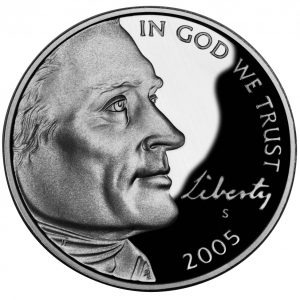 Since the introduction of the 50 State Quarters Program, there have been several changing design series on circulating coinage. All of the programs have been created to honor and celebrate the nation’s history in some way. It started in 1999 with the issuance of the quarter honoring Delaware, the first state to ratify the Constitution granting it the designation of being the first state to enter the Union.
Since the introduction of the 50 State Quarters Program, there have been several changing design series on circulating coinage. All of the programs have been created to honor and celebrate the nation’s history in some way. It started in 1999 with the issuance of the quarter honoring Delaware, the first state to ratify the Constitution granting it the designation of being the first state to enter the Union.
Since 1999, there has been the following coin series issued by the U.S. Mint:
- 2009 Lincoln Bicentennial One Cent Program
- Westward Journey Nickel Series™
- 50 State Quarters Program
- 2009 District of Columbia and U.S. Territories Quarters Program
- America the Beautiful Quarters® Program
- Native American $1 Coin
- Presidential $1 Coins
Although none of these series produced rare coins with the exception of errors and varieties, such as the 2004 Wisconsin extra leaf quarter and the 2005 Minnesota quarter with an extra tree, the only excitement was the novelty generated in 1999 with the new series.
Soon, the American Innovation $1 Coin will join this list. When the American Innovation $1 Coin Act (H.R. 770) finishes its procedural trek through Congress, it will be sent to the other end of Pennsylvania Avenue for the President’s signature. There is no indication that the President will veto this bill.
The 14-year program will honor “American innovation and significant innovation and pioneering efforts of individuals or groups from each of the 50 States, the District of Columbia, and the United States territories.” Four one-dollar coins will be issued each year and issued alongside the Native American Dollar.
Although there is a bias in the numismatic industry against modern coinage, there is a fun aspect of the changing coin designs. Aside from breaking up the monotony, there is an educational aspect that people should take advantage of, even if you have college degrees.
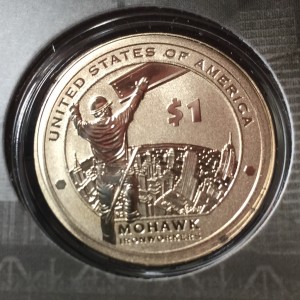
2015-W Native American Dollar Enhanced Uncirculated Reverse celebrating the Mohawk Iron Workers
Mohawk ironworkers were there following the attacks of September 11, 2001, to help clean up and rebuild the World Trade Center site. This is something I would not have known had they not appeared on the coin and asking why.
Regardless of the historical significance of these coins and the underappreciated beauty of the designs, the numismatic industry has not taken the opportunity to promote coin collecting using these changing programs. There is only one reason for the lack of interest from the community: ECONOMICS!
The American Numismatic Association is largely run by dealers who make their living by buying and selling rare coins and bullion. The trade in modern coinage, many items that anyone could find in pocket change, does not have a high rate of return. Therefore, most dealers are not interested.
Although dealers do have the right to earn a living the way they see fit, as part of the overall hobby, they tend to steer away from the modern coins and even downplay their significance to the hobby. This tends to perpetuate a myth that you cannot be a legitimate collector if you collect modern coins.
This attitude is a wasted opportunity for the industry. Aside from being an opportunity to promote the hobby but give people an outlet to learn something more than what they see on the cable news channels.
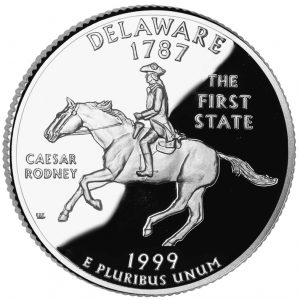 One of the problems with this program can also make it a positive is what will each of the states choose to represent innovation in their state or territory? Promoting numismatics as “history in your hand” can also be a lesson in history to help each state decide what to chose to best represent them on a coin. This is the best opportunity to use numismatics to promote the hobby and history by providing a conduit for discussion in each state.
One of the problems with this program can also make it a positive is what will each of the states choose to represent innovation in their state or territory? Promoting numismatics as “history in your hand” can also be a lesson in history to help each state decide what to chose to best represent them on a coin. This is the best opportunity to use numismatics to promote the hobby and history by providing a conduit for discussion in each state.
What would constitute a state’s great innovation or innovator? Will New Jersey choose Thomas Edison? Will Alexander Graham Bell be Massachusetts’ choice? And what about Pennsylvania? There could be an interesting discussion about honoring Benjamin Franklin, George Westinghouse, or even Andrew Carnegie especially since neither of these men were born in the United States.
There will be a lot of innovation to chose from because there has been a lot of innovation during the country’s 242 years of existence. If you missed the announcement by the United States Patent and Trademark Office (USPTO), they issued the 10 millionth patent on Tuesday, June 19, 2018. And that does not count the patents issued before 1836 when the numbering system was reset by the Patent Act of 1836.
However, the most significant problem with the Innovation $1 Coin is that it is a one-dollar coin. As long as Congress continues to not listen to reason and stops issuing the paper dollar, it does not matter what they do with the coin, it is not going to generate enough interest because the coin will not circulate.
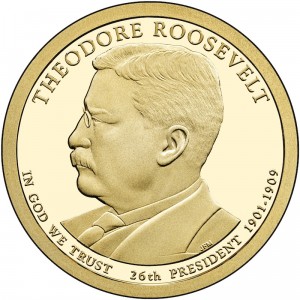 Regardless of how many Government Accountability Office (GAO) reports are issued (GAO-13-164T) or the number of experts that endorse the elimination of the paper dollar for the coin, Congress refuses to address the issue. They point to surveys that show that most of the people older than 50 are against removing the paper dollar. Since this population constitutes the majority of the voters and, more significantly, campaign donors, the politicians are not about to make those people upset.
Regardless of how many Government Accountability Office (GAO) reports are issued (GAO-13-164T) or the number of experts that endorse the elimination of the paper dollar for the coin, Congress refuses to address the issue. They point to surveys that show that most of the people older than 50 are against removing the paper dollar. Since this population constitutes the majority of the voters and, more significantly, campaign donors, the politicians are not about to make those people upset.
In many cases, the Innovation $1 Coin will be a repeat of history. Its potential popularity will fail as Congress hopes to socially engineer excitement in the way they tried to do for the Presidential dollar coins. That was deemed a failure that forced then-Treasury Secretary Tim Geithner to order the U.S. Mint to reduce the production of these coins. This was after certain members of Congress showed its collective stupidy by introducing a bill to prematurely end the program.
There is so much potential for the Innovation $1 Coin to be a great program and to generate publicity for the hobby. But as long as the coin does not circulate and Congress refuses to deal with the situation appropriately, it will be a coin that only existing collectors will take interest in and become a lost opportunity for everyone.
 While the mainstream media has mostly been distracted by other activities in Congress, those of us who watch numismatic-related legislation have had our own action.
While the mainstream media has mostly been distracted by other activities in Congress, those of us who watch numismatic-related legislation have had our own action. The monthly numismatic legislation review was purposely delayed to bring you this important message:
The monthly numismatic legislation review was purposely delayed to bring you this important message:




 → Read more at
→ Read more at 



